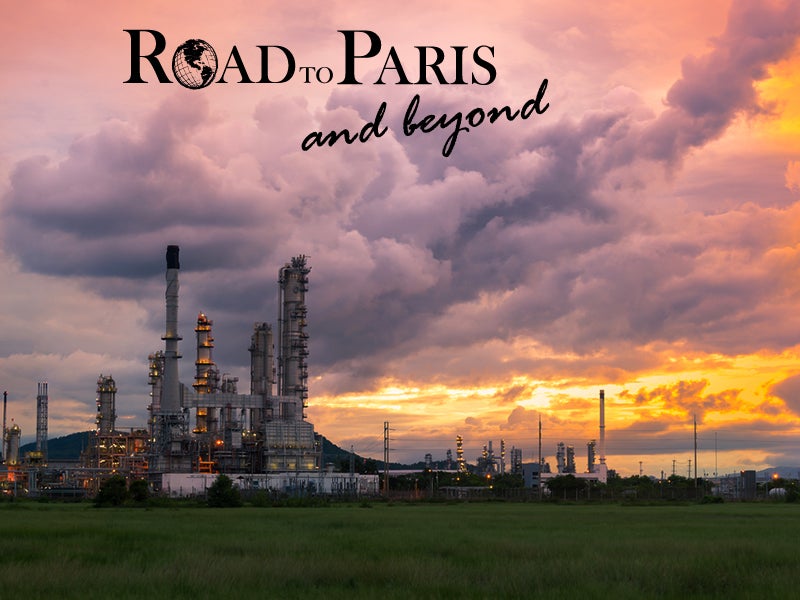Cutting Methane, Boosting Hope For Climate Success
World leaders are gathered in Paris to pledge support for taking meaningful climate action, and there may be no climate solution that is lower cost and higher impact than cutting methane pollution.

This page was published 10 years ago. Find the latest on Earthjustice’s work.
This week in Paris, the world’s leaders gathered to pledge support for taking meaningful climate action—not a moment too soon. For all of us who take an interest in the future, this is a moment for cautious optimism: We just might be able to head off a wholesale climate disaster.
In the U.S., we can take heart from the accelerating shift from coal to clean energy that is already underway and now legally mandated under the President’s Clean Power Plan. Equally important from the standpoint of cutting greenhouse gas emissions is the president’s lesser-known initiative to limit methane pollution from the oil and gas sector.
There may be no climate solution that is lower cost and higher impact than cutting methane pollution. The 2015 World Energy Outlook report by the International Energy Agency, released on last month, called the absence of “robust policy action” aimed at reducing methane emissions by the oil and gas industry “a major missed opportunity to tackle near-term warning.”
Some background: Oil and gas companies leak and deliberately vent and flare more than seven million metric tons of methane every year. (That’s enough natural gas to meet the needs of about six million American homes and worth more than a billion dollars at current prices.)
Economists would call this waste. Everyone should call it crazy. Methane is a fast-acting greenhouse gas that traps more 84 times more heat in the atmosphere than carbon dioxide in the short term.
We have a narrowing window to avoid climate tipping points. If we continue pumping enormous quantities of this supercharged greenhouse gas into the atmosphere, that window will close.
The solutions are straightforward: Find the leaks and plug them. Stop the flaring and venting. And yes, that may mean drilling only when there is a market for the gas. Not only is this doable, it’s cheap. A recent study by ICF International estimated that companies could cut methane emissions by 40 percent or more for about one quarter of one percent of the price of the gas they’re selling, or about one penny per thousand cubic feet. That means $3.00 worth of gas would now cost $3.01.
A public comment period on the president’s proposal concludes today, with 800,000 Americans from across the country weighing in to support strong methane pollution standards. And last month, residents from 15 states travelled to Washington, D.C., to speak with officials about why the Obama administration’s common-sense proposal is so crucial, not only for the climate but also for people’s health.
With the rise of fracking, we are seeing the oil and gas patch expand into dozens of states, encroaching into the communities where Americans live, work and play. All of this fracking and drilling has taken a huge toll on local air quality. Air pollution around major oil and gas plays in Wyoming and Utah now rivals air pollution in Los Angeles.
Families near drilling sites are suffering from unexplained nosebleeds, headaches, dizziness and nausea. Peer-reviewed science has shown a link between low birth weights and proximity to gas drilling operations. And in one Utah community that’s been heavily drilled, concerned community members have noticed a disturbing pattern of miscarriages, infant deaths and birth defects.
Cutting methane pollution means cutting toxic air pollution linked to serious health problems.
At public hearings in Dallas, Denver and Pittsburgh, residents spoke out overwhelmingly in favor of strong methane protections. They recognize that this rule to limit pollution from new oil and gas operations is a critical first step to addressing the larger problem of existing pollution — a health and climate imperative that should be at the very top of our to-do list.
The Road to Paris and Beyond is a blog series exploring how Earthjustice’s climate and energy work will help strengthen the goals to be set by the United States and others during the 2015 United Nations Climate Change Conference in Paris, and the development of the new global climate agreement. The Paris Climate Change Conference (aka “COP21”) begins on November 30 and runs until December 11, 2015.
Established in 2008, Earthjustice’s Northeast Office, located in New York City, is at the forefront of issues at the intersection of energy, environmental health, and social justice.